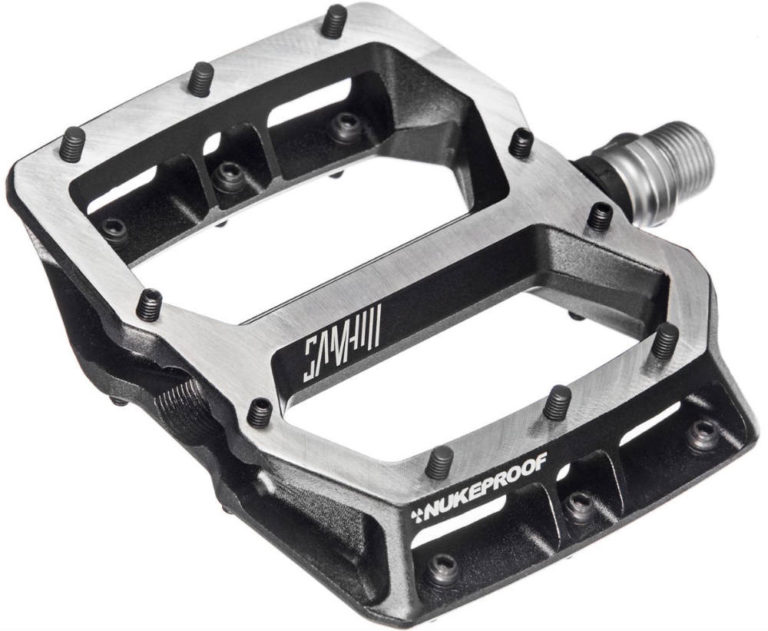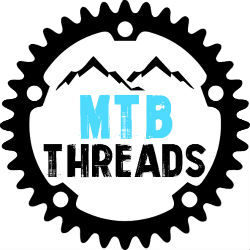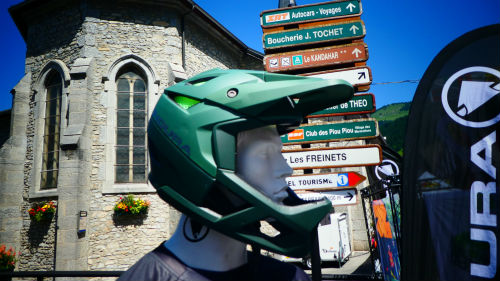What Is The Best Mountain Bike For A Beginner?
What Is The Best Mountain Bike For A Beginner?
Choosing a mountain bike if you are new to the sport can be pretty tricky. There are a few factors that will be going through your head. How a bike looks, the price, suspension, the brand, other people’s recommendations, buying new and buying second hand. Put all those aside for the moment as I answer the question of what is the best mountain bike for a beginner
What You Need To Know About Suspension
You are probably aware that there are a few different types of mountain bike. They are all designed for a particular job. But the first thing you need to understand is the amount of suspension bikes have. By this, I don’t mean how much the suspension goes up and down, but if it has any at all.
Rigid
Rigid mountain bikes are as the name suggests, don’t have any suspension at all. These make them very low cost, but not incredibly comfortable to ride or very capable when riding off-road. Just because it looks like a mountain bike, it doesn’t mean that it will be much fun to ride on anything more technical than a canal path.
Hardtail
Hardtail mountain bikes have suspension on the fork. This makes the bike more comfortable and more capable when riding off-road. Naturally, some hardtails are better than others depending on the quality of the fork and other components. A good hardtail is a good option for a beginner mountain biker, but stay with me; there is more to learn.
Full Suspension
A full suspension mountain bike has suspension on the front fork and a shock absorber on the back wheel. These are for riding more technical terrain, as they are more comfortable and more capable. They slack up the bumps more, allowing you to ride rough terrain. They also allow you to ride for longer, as they the suspension isolates you from some of the bumps, reducing fatigue.
Rigid and hardtail bikes are very easy and efficient to pedal; this is because all of your pedalling power goes into the drivetrain and then into the back wheel.
Full suspension mountain bikes are not as efficient to pedal, as they bob with each pedal stroke. Modern full-suspension bikes have much better-designed frames and suspension to reduce this bob. Some even allow you to lock out the suspension altogether for climbing or riding on smoother surfaces.
When it comes to the amount of suspension travel (how much it goes up and down), you need to choose a bike that has sufficient travel for the terrain you are riding. However, as a beginner, you won’t be taking on anything too gnarly just yet.
Types Of Mountain Bike
There are a few sub categories of mountain bike you need to be aware of. These are all made for certain types of terrain.
Cross Country

Cross country mountain bikes are lightweight and are designed to be ridden for long distances, for a long time at high speed. There are hardtail and full suspension cross country bikes. These usually have quite short suspension travel, as weight saving is the priority for cross country riders. Cross country bikes are a good option if you are aspiring to be a racer or you would like something a bit racy for your local trails.
Trail

Trail bikes also come in hardtail and full suspension. They generally have a more playful feel and are more versatile than cross country bikes. Trail bikes are the most common type of mountain bike and vary in price. They are great fun and are suitable for most types of riding.
Enduro

Enduro bikes look a lot like trail bikes, but there are some significant differences. These are also known as all-mountain bikes and are designed to be ridden anywhere. Enduro mountain bikes are all full suspension bikes with lots of suspension travel. This is because they need to cope with big alpine terrain, rocks roots and jumps. Enduro bikes are also made to be ridden long distances, so they are made to be as comfortable and as efficient as possible without compromising their ability to charge down mountains on very rough terrain.
Downhill

Downhill mountain bikes are literally made to go downhill as fast as possible. Their frames are designed to be super stable when taking on technical descents. They have a massive amount of suspension travel front and back to soak up bumps and large jumps. These are fantastic machines, but as a beginner, you should avoid them like the plague
Fat Bikes

Fat bikes are usually rigid, but there are some versions with front suspension. They have huge squishy tyres that soak up the bumps. The primary purpose of a fat bike is to be ridden over snow and sand. The large tyres allow you to stay on top of the loose surface rather than cutting into it.
Wheel Sizes
You may think that there are enough variables already without going into detail about how big your wheels should be. But don’t worry, this isn’t complicated, and there are not that many options. However, you need to know about them.
- 26″ – These are slowly being phased out, so I would avoid a bike with 26″ wheels these days. This is because it is getting harder to buy good tyres for them. However, the advantage of 26ers is that they make it easy to change direction and give the bike a very nimble feeling.
- 27.5″ – This is my choice of wheel size. I ride 27.5″ wheels on my enduro bike, as they still have a nimble feeling but the extra circumference means that they roll over bumps easier. Also, 27.5″ wheel suit my build (I am about 175cm tall).
- 29″ – 29ers roll much more easily over bumps. You will find that bikes with 29″ wheels will have less suspension travel than those with 27.5″ wheels. The extra size makes 29er bikes faster in a straight line; however, they are a bit more difficult to change direction quickly. 29ers are popular with taller riders as the bike tends to be a better fit for them.
Types Of Pedals

The type of pedal you choose depends on what your personal preference.
- Flat pedals – Flat pedals are the traditional type of pedal. You are not attached to the bike at all, so it is easy to dab a foot down when necessary. Beginners tend to gravitate towards flat pedals, but I ride with flats in the French Alps. These are best used with flat shoes. This is because you need to be able to feel the feedback you get from the pedals. Don’t be tempted to wear hiking boots, as they will isolate you from what the bike is telling you. I like to wear Five Ten Freeriders, which are super grippy and incredibly comfortable flat mountain bike shoes.
- Clipless – As you get better at mountain biking, you may opt for clipless pedals and shoes. This combo attaches your shoes to the pedals (yes clipless pedals have clips). The advantage of these is that you have much better power transfer to your pedals and keep you securely on your pedals when it gets bumpy. If you decide to go for these, practice riding around on soft grass and get used to releasing your feet from the pedals in a hurry.
What Kind Of Bike Should I Buy As A Beginner Then?
Ok, I went through all the different types of mountain bike so you could get a good idea of what is out there. But I would recommend that you start with a hardtail for a couple of reasons:
- Price – Hardtails are much cheaper than full suspension ones (unless you go for a costly carbon fibre cross country beast). The chances are, you don’t know how often you are going to be riding. If for some reason, you don’t get to ride as often as you like, you may end up with a very expensive bike sitting in the garage. If you find that you are riding a lot and your skills improve, sell your hardtail and upgrade to a full susser. Obviously, if you have a load of money burning a hole in your pocket, buy what you want to, but I would still recommend a good hardtail over a full suspension bike in the early days.
- Learn key skills – A hardtail is a great way to learn the key skills needed for mountain biking. If you can ride a hardtail well, you will excel on a full-suspension bike.
- Versatility – Often people buy their mountain bike not just for fun, but for commuting. A hardtail is much more efficient for commuting, as they are lighter and you don’t get the suspension bob from pedalling.
Examples of 2020 Hardtail Mountain Bikes
GT Aggressor

The GT Aggressor is the bare minimum you should want in a mountain bike. Having said that, it is competent for a bike that is so cheap. It is ideal for riders that want a bike that is good for commuting and is suitable for the occasional off-road ride.
Vitus Nucleus

I am a big fan of Vitus mountain bikes. This is because they are fantastic value for money. They have the capability and components common with more expensive bikes. But the main thing about them is that they are super fun to ride and the Nucleus is no exception. This bike will last a while, and it is suitable for intermediate riders also.
What Else Do I Need?
Buying a mountain bike doesn’t stop at the bike, unfortunately. There are a few things that you should get to make it more fun. However, I recommend that you build up to the accessories over time to spread the payments out. Alternatively, you know what to ask for birthdays and Christmas.
Protection

Mountain biking is a dangerous sport, but we do everything we can to manage the risk. There are ways to protect ourselves when we do have a crash:
- BUY A HELMET!!!! – This is the most important thing you can buy. You only get one head, and you need to protect it. There are a few types of mountain bike helmet, but at this early stage, you should get a half-shell cross country or enduro helmet. A full-face helmet may be a bit overkill for a beginner, but if you fancy a helmet that can be converted from a full face to a half shell enduro helmet, check out the Bell Super 3 R.
- Knee pads – Knee pads are a great idea; there are a few different types offering different amounts of coverage. I like to wear them, as they give me confidence riding technical terrain. Check out my guide to mountain bike knee pads.
- Elbow pads – I also wear elbow pads for added confidence. They are great when you actually land on the pad, most of the time they don’t. But I would be upset if I got a preventable injury if I didn’t wear them. Here is my guide to mountain bike elbow pads.
- Body armour – Body armour is usually used for really technical and dangerous riding. But, if you have a previous injury that you don’t want to make worse by landing on it, body armour may be worth looking in to. There are different types of mountain bike body armour offering different levels of protection. Check out my guide to mountain bike body armour.
Jersey
You may be tempted to chuck on an old t-shirt for mountain biking. I totally get why you would do this, but you would be much better off with a proper mountain bike jersey. They are made for the job of keeping you as comfortable as possible and allow you to move unrestricted while riding. The most important thing about a mountain bike jersey is that it needs to be able to wick sweat away from your body. This makes a massive difference to your comfort.
Shorts
Good mountain bike shorts are an excellent investment. They stretch in all the right places, offer protection, are hard wearing and comfortable. Some mountain bike shorts are waterproof, which makes a massive difference to your riding experience on a soggy day.
Gloves
A pair of mountain bike gloves will keep your fingers warm and give you excellent grip on the handlebars. There is an argument for not wearing mountain bike gloves, but I recommend wearing them as sweaty hands can easily cause your hands to slip off the grips.
What Is The Best Mountain Bike For A Beginner?: Answered!
So there you have it, know you know what you should be looking for in a bike and you have some examples to choose from. Which bike are you going to buy and what made you choose it? Please let me know in the comments section below.




